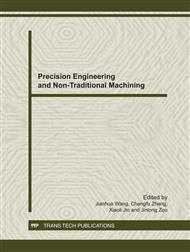[1]
Yang Yuwei,Yang Jian,Gu Hongwei,et al. Bulletin of the chinese ceramic soceity, 27 (2008) 119-126.
Google Scholar
[2]
Ren Ni,Ma Zhanji,Gao Xin. Vacuum science and technology, 23 (2003) 176-186.
Google Scholar
[3]
Wang Maozhang, Yang Quanhong, Cheng Huiming. Carbon Techniques,2003 (2003) 23-28.
Google Scholar
[4]
Xu Ming, Shi Wei, Hou Lei,et al. Chinese Physics Letters, 27 (2010) 0242121-02421213.
Google Scholar
[5]
J. Robertson. Materials Science and Engineering,37 (2002) 129-281.
Google Scholar
[6]
ISO11254-1. Laser and laser-related equipment-Determination of laser-induced damage threshold of optical surface[S],Part1:1-on-1 test.
DOI: 10.3403/30166851u
Google Scholar
[7]
Wu Shenjiang, Shi Wei, et al. Proc. SPIE. 7995 (2010) 799510-799513.
Google Scholar
[8]
Nanai L, Fule M, Bali K, et al. Diamond and Related Materials, 11 (2002) 1106-1109.
Google Scholar
[9]
Dumitru G, Romano V, Weber H P, et al. Applied Surface Science, 222 (2004) 226-233.
Google Scholar
[10]
D.Vouagner, et al. Diamond and Related Materials, 9 (2000) 786–791.
Google Scholar
[11]
Lu FX, Y BX, Cheng DG. Thin Solid Films, 21 (1992) 220-225.
Google Scholar
[12]
M. Pandey, D. Bhatacharyya, D. S. Patil, K. Ramachandran, N. Venkatramani, A. K. Dua. Journal of Alloys and Compounds, 386 (2005) 296-298.
DOI: 10.1016/j.jallcom.2004.05.067
Google Scholar
[13]
M. Veres, M. Koos, I. Pocsik. Diamond and Related Materials, 11 (2002) 1110-1113.
Google Scholar
[14]
N.A. Sanchez, C. Rincon, G. Zambrano, H. Galindo, P. Prieto. Thin Solid Films, 373 (2000) 247-250.
Google Scholar
[15]
Junqi Xu, Junhong Su, Weiguo Liu, et al. Proc. SPIE, 6722 (2007) 67220A-67220D.
Google Scholar
[16]
Junqi Xu, Huiqing Fan, Weiguo Liu et al. Diamond and Related Materials, 17 (2008) 194-198.
Google Scholar
[17]
Yuan Lei, Zhao Yuan'an, He Hongbo, Shao Jianda, Fan Zhengxiu. High Power Laser and Particle Beams. 18 (2006) 595-599.
Google Scholar
[18]
Eli Yablonovitch, N. Bloemberen.Phys. Rev. Lett., 29 (1972) 907-910.
Google Scholar
[19]
L. V. Keldysh. Contemporary Physics , 27 (1986) 395-428.
Google Scholar


